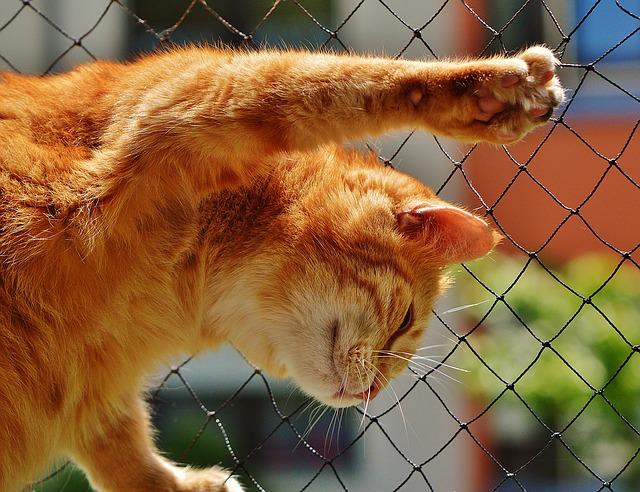Archive for October 2016
Athletic Performance
For athletes in the Houston area looking to improve on their personal best or gain a hand up against the competition, it could be worth adding the power of chiropractic as an augment to your repertoire. At Holmes Chiropractic, we use chiropractic theory and practice to help athletes of all ability levels reach toward their true potential. Chiropractic seeks to facilitate better communication between the brain and body, so that you can trust that you are leaving it all out there during your athletic endeavors. Here are some of the ways we help you succeed:
- Healing faster: injuries are a part of any sport, but the amount of time they take out of your training is variable depending on the kind of support you receive. We are specialists in the biomechanical form and can help you with hands on technique including chiropractic adjustment, trigger point therapy, spinal decompression and other modalities to help you return to the playing field
- Range of motion: a key to preventing injury is making sure your body can bend without breaking.
- Improved lung capacity: subluxation in the cervical region can create interference with the diaphragm, limiting the potential of your respiratory system. Every cell in the body needs a constantly refreshing source of oxygen to provide you with the oxygen you need to sustain and excel.
- Muscle building: chiropractic ensures that your muscles are contracting and releasing smoothly, a process that is started when motor neurons in the brain send a signal down the spinal cord to the muscle. The easier this is, the more efficiently muscle builds.
At our office in Houston, we serve as a sounding board to help you set fitness and lifestyle goals and overcome physical or mental limitations that may be holding you back. If you are interested in maximizing your athletic potential, give our office a call to schedule an appointment today.
Dr. Randall Holmes, D.C.
Breathe Easier
Fact: every cell needs a constantly refreshing supply of oxygen to perform cellular respiration and provide your body and biological systems they need to keep moving forward. Getting this oxygen to the cells is a complicated process that our body takes care of for us: in fact, humans take in breath around an average of 20,000 times a day. The diaphragm is the unsung hero of the breathing process which may have a legitimate claim for the title of most important muscle in the body. The sheet of muscle that separates the thorax from the abdomen is the main power source for the respiratory system and it intakes oxygen in the following way:
- Expanding the rib cage through positive intra-abdominal pressure
- Expanding the rib cage, using the abdomen as the fulcrum
- Decreasing intrapleural pressure, which determines whether or not air moves into the lungs.
Accessory muscles in the breathing process, including the abdomen are also important, but not quite as essential as the diaphragm for drawing breath. Potential causes for diaphragm dysfunction that can be treated by the chiropractor include:
- Interference with the phrenic nerve, which exits from the spine between C3 and C5
- Poor posture
- Improper breathing technique
- Weakness of accessory muscles
Breathing properly means better circulation, helping oxygen enter the blood stream easier and for carbon dioxide to leave more efficiently. The diaphragm should be accountable for 70-80% of each breath drawn and to this end, dysfunction should be prevented. At Holmes Chiropractic, we can help you learn the essentials of proper breathing, which rest heavily on posture, help you to tone the muscles involved and address any spinal imbalance that may be interfering with the function of the phrenic nerve. Give our office in Houston a call to schedule an appointment today!
Dr. Randall Holmes, D.C.
A Riddle for your Friday
I am lighter than a feather, yet the strongest man couldn’t hold me for much more than a minute. The answer: breath. Breathing is our most innate activity, and most of us will draw a breath (on average) 20,000 times a day until our last. For such an automatic bodily function, it is a constant source of wonder that people simply don’t do it correctly. Poor posture, stress and tension, lack of abdominal strength and pure lack of awareness are some of the top reasons why people don’t draw breath effectively, and it definitely creates a dearth in their well-being.
At Holmes Chiropractic, we focus on teaching people how to coordinate the function of the diaphragm and the abdomen, and all of the accessory muscles in drawing a proper breath. Why, you ask? because nothing is more essential than oxygen for the human body. Every single cell needs to respire in order to stay alive and produce the energy needed for all the functions and systems of the body to work for you throughout the day.
- Addressing abdominal weakness: weak abs means less lung capacity.
- Teaching proper breathing technique: breathing through the nose, using the diaphragm for 70-80% of the breathing movement, and encouraging proper oxygen exchange. We can show you how in office.
- Resolving spinal misalignment: nerves exiting between C3 and C5 power the phrenic nerve which is the main nerve input for the diaphragm. Pressure on any of these nerves can cause dysfunction in the diaphragm.
Finally, negating the negative feedback cycle of poor posture and poor breathing: a hunched over posture will not allow your rib cage or thoracic cavity to open properly and capture the right amount of air. There are innumerable ways that breathing better will help you lead a better life; start breathing better today by calling our office in Houston to schedule an appointment.
Dr. Randall Holmes, D.C.
Spinal Instability
Spinal instability is a term that describes the presence of abnormal movement between two vertebrae. As we age or injure ourselves through different kinds of traumas, our discs degenerate and lose tension, which allows more movement to take place between the vertebrae. Furthermore, the facet joints located on the back of the spinal column, become displaced and arthritic, causing the production of bone spurs around the margin of the joints.
Symptoms of spinal instability include back pain, muscle spasm, and limited range of motion, among other things as the pain is caused when normal flexion and extension movements cause the vertebrae to articulate abnormally. Most often, the associated spinal nerve will be right in the firing line, and the irritation of this nerve is what will send pain signals to the brain.
A common response for treating spinal instability is surgery, but the condition can be managed with chiropractic as well. Because the condition is caused by the vertebrae falling out of alignment, there is a lot we can do to prevent the instability from getting worse and actually help restrengthen the region and restore some semblance of balance.
- We focus on the surrounding muscles: strengthening compromised muscles so that they can lend support to the unstable region, and treating sore muscles with massage and trigger point therapy to keep the tissues of the lower back in good shape.
- Encourage weight loss: every excess pound is going to complicate the problem further. Through nutrition and exercise, we can help you reduce the burden that is placed on the unstable region.
- Correct spinal misalignment (subluxation)
- Encourage lymph flow out of the injurious region.
An improvement of symptoms through chiropractic is a great indicator of success for surgery. Spinal instability is a serious condition and should be treated as such; before any steps are taken, you must have a full picture of the condition you are facing. At Holmes Chiropractic, we offer you our services in the detection and conservative treatment of spinal instability.
Dr. Randall Holmes, D.C.
Defeating Piriformis Syndrome
A tight piriformis muscle is a problem: when the muscle that runs adjacent to the sciatic nerve becomes irritated, so to does the sciatic nerve, the nerve responsible for communicating with muscles in the back side of the lower body. It is important to distinguish piriformis syndrome from other problems that could be creating similar symptoms, and in this respect we can help.
Piriformis syndrome is typically characterized by a sore butt, or dull aching in the sacrum region and at the tops of the femurs. This can also contribute to sciatica which is characterized by numbness and tingling in the legs, pain and stiffness in the back side which can make it difficult to stand up. If we determine that piriformis syndrome may be contributing to sciatica or just causing you discomfort, we can move forward with a chiropractic treatment plan that helps restore the function and mobility of pelvic and spinal joints, and includes trigger point therapy that releases the tension from the muscles. Following up with simple stretching and exercise ensures you have the best chance of overcoming piriformis syndrome. Here are 2 simple stretches to be done from home:
- Lay on your back with legs extended and feet flexed. Slowly draw one knee up and clasp both hands behind it. Pull this knee toward the opposite shoulder until you feel resistance and hold for 30 seconds. This constitutes 1 rep and should be repeated 3 times with each leg.
- Lay on your back with knees bent and feet flat on the floor. Rest the right ankle over the knee of the left leg and pull the left thigh toward your chest. Hold this stretch for up to 30 seconds and repeat on each side up to 3 times.
With stretching, consistency is key. Try devoting 5 minutes before bed and when you wake up to these easy stretches and feel how the built up tension in the piriformis muscle dissipates.
Dr. Randall Holmes, D.C.
Combating Sciatica
Sciatica is the name of the condition in which the sciatic nerve, the longest in the human body, is irritated. Running from the lower back, through the butt and down the leg, it’s no wonder this nerve can come under fire from a variety of injuries- whether it be from a herniated disc, subluxation in the lower back or a problem relating to the piriformis muscle, sciatica is characterized by pain and stiffness in the lower back, shooting pains that can make standing up difficult, and especially by tingling or numbness in the lower extremities. Fortunately, chiropractic is a tailor made treatment for sciatica.
While all of us have subluxation of varying degrees at different points in our life, a subluxation in the lumbar region can create sciatic nerve compression. Furthermore, herniated discs lead to sciatica in the same way that it causes nerve problems elsewhere in the back: the cartilaginous material in the disc begins to bulge into the spinal canal and put pressure on the nearby nerves, which, in the case of sciatica, will be the sciatic nerve. While most herniated discs will heal by themselves, chiropractic adjustment, traction and spinal decompression are great techniques for easing the pain associated with herniated discs and speeding up the time of recovery.
The piriformis muscle runs underneath the glutes and it can also cause irritation to the sciatic nerve if it becomes strained or stiff. We treat the piriformis muscle with trigger point therapy to release the tension and improve circulation. While the reasons for your particular sciatic nerve pain are likely varied, your best way to fight it is with the insight and care we offer at Holmes Chiropractic.
Dr. Randall Holmes, D.C.
Overtraining
While the concept of diminishing returns is borrowed from economics, it can also be applied to strength training, particularly muscle building. When we take a workout too far or workout too persistently, not giving the body the time or nutrition it needs to recover, your muscles will reach a point where they are incurring physical trauma at a faster rate than their body can repair the damage. Signs of overtraining include:
- Feeling drained after a routine workout
- Emotional instability
- Underperformance
- Inability to concentrate
- Personality and mood changes
- Chronic fatigue
Many of these symptoms can be worsened by an imbalance in the nervous system, themselves often a result of too much exercise and not enough rest. Subluxation is often present in athletes who are feeling out of whack, and chiropractic adjustments work to restore the spine to proper alignment, allowing the conduit of the nervous system to communicate properly with every system in the body. Furthermore, we can help open up injurious muscle sites to an influx of nutrients through targeted massage.
Avoiding the syndrome of overtraining means being informed and proactive: your level of activity and fitness must be balanced by adhering to a proper rest schedule and ensuring that your muscle protein synthesis is greater than protein breakdown through diet. If your body is the warship, then we can be your maintenance crew. Call our office in Houston today to schedule an appointment.
Dr. Randall Holmes, D.C.
Scar Tissue
Scar tissue is a part of the body’s natural healing process: in the same way that a cut in the skin will eventually heal over and form a temporary or permanent scar, the same happens within the body when serious injury, surgery or repetitive trauma occurs. Cells are destroyed and cells must regenerate to replace them. The only difference is that scar tissue, by some estimates, is 60% as elastic as the previous healthy tissue. Furthermore, when scar tissue is allowed to build up over time it can form an adhesion to the surrounding tissue, rendering a previously flexible region stiff and sore.
The idea is too prevent the accumulation of too much scar tissue. Chiropractic offers a few excellent modalities for doing just that, including the Active Release Technique, Graston Technique, Myofascial Release, and Trigger Point Therapy that targets areas with a lot of scar tissue and breaks up the tension. Even basic massage is good at getting in there and dissipating the build up of scar tissue. By doing this, we can help you improve range of motions in stiff joints and improve pain symptoms.
One final benefit is that by defeating the adhesion of scar tissue to surrounding tissue, we are actively fighting a force that is seeking to pull your body out of balance. At Holmes Chiropractic, we support any initiative that keeps your spine balanced and free of pain. If too much scar tissue has created a problem in your life, give our office a call and schedule an appointment today.
Dr. Randall Holmes, D.C.







